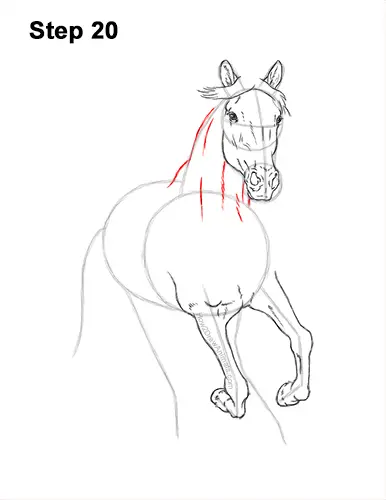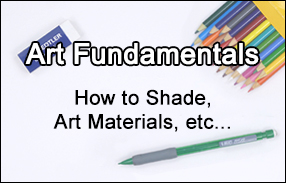
Step 20: Darken the lines below the head to create the running horse's neck. Add an extra curved line on the lower, left side to make the neck thicker. Add a few curved, vertical lines and short strokes inside the neck to emphasize the muscle structure.

Step 21: Draw a series of long, curved strokes on the left side of the neck for the rest of the horse's mane. Just like with the front part of the mane, don't draw every individual hair strand. Draw big clumps instead. At the end of each clump, draw a series of short strokes for the tips of the hair strands. Make the clumps of hair have different widths. You can make the mane longer using longer lines.

Step 22: Use the shapes in the middle as guides to draw the rest of the running horse's body. Darken the outer edges of the guides to create the shape of the body. Leave a small gap on the lower, left side of the body where the hind leg will be. Don't overlap the shape of the first front leg as you draw the outer edges of the body. Add a series of lines and short strokes within the body for extra detail on the muscle structure.

Step 23: Use the long, sloping line on the left as a guide to draw the first hind leg. Just like with the front legs, first lightly sketch the shape of the leg around the guide. Make the top part of the leg wide. Use curved lines to indicate where the joints are. When you get the shape right, darken the lines. This leg isn't bending as much as the horse's front legs. The overall shape should be skinny. Add the blocky hoof at the bottom with short strokes for the feathering.

Step 24: Use the last line under the running horse's body as a guide to draw the other hind leg the same way. Draw the shape of the leg around the guide line. Make the joints bulgy and the hoof blocky. Keep the shape of the leg skinny. Don't overlap the shape of the other legs as you draw this leg.







